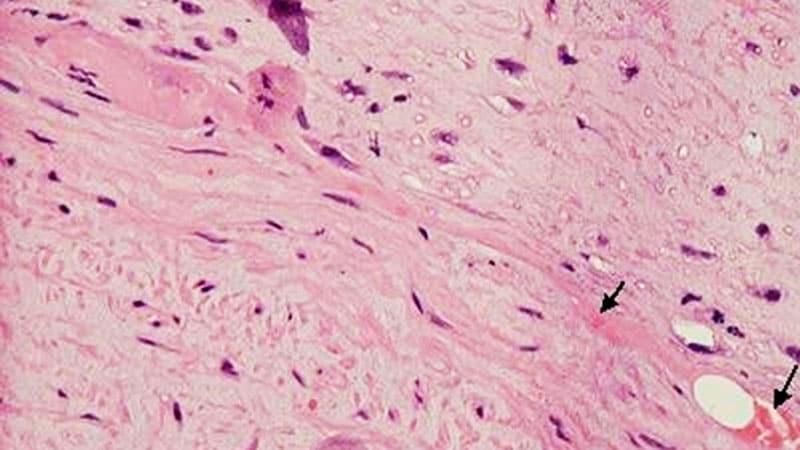AI Model Identifies High-Risk Heart Failure Phenotype in Diabetes Patients
2 Sources
2 Sources
[1]
AI model identifies high-risk heart failure phenotype in diabetes
Researchers at UT Southwestern Medical Center have developed a machine learning model that can identify patients with diabetic cardiomyopathy, a heart condition characterized by abnormal changes in the heart's structure and function that predisposes them to an increased risk of heart failure. The findings, published in the European Journal of Heart Failure, offer a data-driven method to detect a high-risk diabetic cardiomyopathy phenotype, enabling early interventions that could help prevent heart failure in this vulnerable population. "This research is noteworthy because it uses machine learning to provide a comprehensive characterization of diabetic cardiomyopathy -- a condition that has lacked a consensus definition -- and identifies a high-risk phenotype that could guide more targeted heart failure prevention strategies in patients with diabetes," said senior author Ambarish Pandey, M.D., Associate Professor of Internal Medicine in the Division of Cardiology at UT Southwestern. Phenotypes are observable physical properties of individuals that give them specific biological traits, according to Dr. Pandey. He and his research colleagues used data from the Atherosclerosis Risk in Communities cohort, which included more than 1,000 participants with diabetes but no history of cardiovascular disease. By analyzing a set of 25 echocardiographic parameters and cardiac biomarkers, the team identified three patient subgroups. The study identified one of these subgroups, making up 27% of the cohort, as the high-risk phenotype. Patients in this group exhibited significantly elevated levels of NT-proBNP, a biomarker linked to heart stress, along with abnormal heart remodeling, such as increased left ventricular mass and impaired diastolic function. Most notably, the five-year incidence of heart failure in this group was 12.1%, significantly higher than in the other subgroups. Based on these findings, the researchers developed a deep neural network classifier to identify diabetic cardiomyopathy. When validated on additional cohorts, including the Cardiovascular Health Study and UT Southwestern's electronic health record database, the model identified between 16% and 29% of diabetic patients as having the high-risk phenotype. These patients consistently exhibited a higher incidence of heart failure. "Clinically, this model could help target intensive preventive therapies, such as SGLT2 inhibitors, to patients most likely to benefit," Dr. Pandey said, referring to a class of medications used to treat Type 2 diabetes. "It may also help enrich clinical trials of heart failure prevention strategies in diabetes patients." The study expands on earlier research into diabetic cardiomyopathy, which has been difficult to define due to its asymptomatic early stages and the wide range of effects it can have on the heart. Machine learning has introduced a way to pinpoint high-risk patients, potentially offering a more refined approach than traditional diagnostic methods. "This builds on our previous work that evaluated the prevalence and prognostic implications of diabetic cardiomyopathy in community-dwelling adults," Dr. Pandey said. "It extends those efforts by using machine learning to identify a more specific high-risk cardiomyopathy phenotype." By providing a new way to identify patients at risk for heart failure, the model could enable earlier and more aggressive interventions, improving patient outcomes and shaping future research in cardiovascular care. "This research aligns with UTSW's missions by leveraging strengths in data science and cardiovascular research to develop tools that could improve patient care and inform future clinical trials," Dr. Pandey said.
[2]
AI tool helps identify heart failure risk in diabe | Newswise
DALLAS - Oct. 22, 2024 - Researchers at UT Southwestern Medical Center have developed a machine learning model that can identify patients with diabetic cardiomyopathy, a heart condition characterized by abnormal changes in the heart's structure and function that predisposes them to increased risk of heart failure. The findings, published in the European Journal of Heart Failure, offer a data-driven method to detect a high-risk diabetic cardiomyopathy phenotype, enabling early interventions that could help prevent heart failure in this vulnerable population. "This research is noteworthy because it uses machine learning to provide a comprehensive characterization of diabetic cardiomyopathy - a condition that has lacked a consensus definition - and identifies a high-risk phenotype that could guide more targeted heart failure prevention strategies in patients with diabetes," said senior author Ambarish Pandey, M.D., Associate Professor of Internal Medicine in the Division of Cardiology at UT Southwestern. Phenotypes are observable physical properties of individuals that give them specific biological traits, according to Dr. Pandey. He and his research colleagues used data from the Atherosclerosis Risk in Communities cohort, which included over 1,000 participants with diabetes but no history of cardiovascular disease. By analyzing a set of 25 echocardiographic parameters and cardiac biomarkers, the team identified three patient subgroups. The study identified one of these subgroups, making up 27% of the cohort, as the high-risk phenotype. Patients in this group exhibited significantly elevated levels of NT-proBNP, a biomarker linked to heart stress, along with abnormal heart remodeling, such as increased left ventricular mass and impaired diastolic function. Most notably, the five-year incidence of heart failure in this group was 12.1%, significantly higher than in the other subgroups. Based on these findings, the researchers developed a deep neural network classifier to identify diabetic cardiomyopathy. When validated on additional cohorts, including the Cardiovascular Health Study and UT Southwestern's electronic health record database, the model identified between 16% and 29% of diabetic patients as having the high-risk phenotype. These patients consistently exhibited a higher incidence of heart failure. "Clinically, this model could help target intensive preventive therapies, such as SGLT2 inhibitors, to patients most likely to benefit," Dr. Pandey said, referring to a class of medications used to treat Type 2 diabetes. "It may also help enrich clinical trials of heart failure prevention strategies in diabetes patients." The study expands on earlier research into diabetic cardiomyopathy, which has been difficult to define due to its asymptomatic early stages and the wide range of effects it can have on the heart. Machine learning has introduced a way to pinpoint high-risk patients, potentially offering a more refined approach than traditional diagnostic methods. "This builds on our previous work that evaluated the prevalence and prognostic implications of diabetic cardiomyopathy in community-dwelling adults," Dr. Pandey said. "It extends those efforts by using machine learning to identify a more specific high-risk cardiomyopathy phenotype." By providing a new way to identify patients at risk for heart failure, the model could enable earlier and more aggressive interventions, improving patient outcomes and shaping future research in cardiovascular care. "This research aligns with UTSW's missions by leveraging strengths in data science and cardiovascular research to develop tools that could improve patient care and inform future clinical trials," Dr. Pandey said. Other UTSW researchers who contributed to this study were DuWayne Willett, M.D., Professor of Internal Medicine, and Muhammad Shariq Usman, M.D., resident in Internal Medicine. The study was supported by funding from Applied Therapeutics. About UT Southwestern Medical Center UT Southwestern, one of the nation's premier academic medical centers, integrates pioneering biomedical research with exceptional clinical care and education. The institution's faculty members have received six Nobel Prizes and include 25 members of the National Academy of Sciences, 24 members of the National Academy of Medicine, and 14 Howard Hughes Medical Institute Investigators. The full-time faculty of more than 3,200 is responsible for groundbreaking medical advances and is committed to translating science-driven research quickly to new clinical treatments. UT Southwestern physicians provide care in more than 80 specialties to more than 120,000 hospitalized patients, more than 360,000 emergency room cases, and oversee nearly 5 million outpatient visits a year.
Share
Share
Copy Link
Researchers at UT Southwestern Medical Center have developed a machine learning model that can identify patients with diabetic cardiomyopathy, potentially enabling early interventions to prevent heart failure in high-risk individuals with diabetes.

AI Model Identifies High-Risk Diabetic Cardiomyopathy
Researchers at UT Southwestern Medical Center have developed a groundbreaking machine learning model that can identify patients with diabetic cardiomyopathy, a heart condition characterized by abnormal changes in the heart's structure and function. This condition predisposes patients to an increased risk of heart failure. The findings, published in the European Journal of Heart Failure, offer a data-driven method to detect a high-risk diabetic cardiomyopathy phenotype, potentially enabling early interventions to prevent heart failure in this vulnerable population
1
2
.Study Methodology and Findings
The research team, led by Dr. Ambarish Pandey, Associate Professor of Internal Medicine in the Division of Cardiology at UT Southwestern, utilized data from the Atherosclerosis Risk in Communities cohort. This dataset included over 1,000 participants with diabetes but no history of cardiovascular disease. By analyzing 25 echocardiographic parameters and cardiac biomarkers, the team identified three distinct patient subgroups
1
2
.One subgroup, comprising 27% of the cohort, was identified as the high-risk phenotype. Patients in this group exhibited:
- Significantly elevated levels of NT-proBNP, a biomarker linked to heart stress
- Abnormal heart remodeling, including increased left ventricular mass
- Impaired diastolic function
Most notably, the five-year incidence of heart failure in this high-risk group was 12.1%, significantly higher than in the other subgroups
1
2
.AI Model Development and Validation
Based on these findings, the researchers developed a deep neural network classifier to identify diabetic cardiomyopathy. The model was validated on additional cohorts, including the Cardiovascular Health Study and UT Southwestern's electronic health record database. Results showed that the model identified between 16% and 29% of diabetic patients as having the high-risk phenotype, with these patients consistently exhibiting a higher incidence of heart failure
1
2
.Related Stories
Clinical Implications and Future Directions
Dr. Pandey emphasized the potential clinical applications of this model: "This model could help target intensive preventive therapies, such as SGLT2 inhibitors, to patients most likely to benefit. It may also help enrich clinical trials of heart failure prevention strategies in diabetes patients"
1
2
.The study expands on earlier research into diabetic cardiomyopathy, which has been challenging to define due to its asymptomatic early stages and varied effects on the heart. This machine learning approach offers a more refined method for identifying high-risk patients compared to traditional diagnostic techniques
1
2
.Advancing Cardiovascular Care
By providing a new way to identify patients at risk for heart failure, the model could enable earlier and more aggressive interventions, potentially improving patient outcomes and shaping future research in cardiovascular care. The research aligns with UT Southwestern's mission by leveraging strengths in data science and cardiovascular research to develop tools that could enhance patient care and inform future clinical trials
1
2
.This innovative approach to identifying high-risk diabetic cardiomyopathy demonstrates the growing potential of AI and machine learning in healthcare, particularly in early disease detection and personalized treatment strategies.
References
Summarized by
Navi
[1]
Related Stories
Weekly Highlights
1
Google TPUs Challenge Nvidia's AI Chip Dominance as Meta Explores Billion-Dollar Switch
Business and Economy

2
OpenAI and Jony Ive Reveal First Hardware Prototype for Screenless AI Device
Technology

3
OpenAI Faces Legal Battle Over Teen Suicide Cases, Blames Users for Violating Terms of Service
Policy and Regulation








